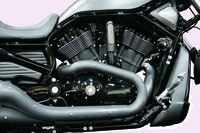There’s no way to give a step-by-step method for every engine out there, so get your hands on a shop manual. But you’ll need surprisingly few tools for this job, and most of them are inexpensive: some wrenches and a set of feeler gauges (thin metal strips of varying thickness).
No matter what kind of engine you have, the work will go easier if you remove the spark plugs—this makes it easier to turn the engine over. What you want to do is get each cylinder to Top Dead Center (TDC), where the piston is at the top of its stroke. On most engines, this means turning the crankshaft until each piston rises in turn. When it’s in the correct position, you’ll use the feeler gauge to measure how much clearance there is between the valve and the valve-opening mechanism.
Some systems will let you adjust this clearance by turning a screw. Other (high performance) systems require you to replace shims—that usually involves removing the camshafts.
How often should you adjust your valves? Your owner’s manual will tell you—bikes' typical inspection intervals are between 3,000 to 16,000 miles (4,800 to 26,000 km). And some engines use hydraulic adjusters. How you adjust them? You sit on your couch, open a beer, and watch the ballgame—they adjust themselves automatically every time you ride.

/cloudfront-us-east-1.images.arcpublishing.com/octane/U4CKRUKLKZD43FDSDLZHBL7YVA.jpg)
/cloudfront-us-east-1.images.arcpublishing.com/octane/OFSXJJ5PZFEZ5D5ZPMCFVHJUMA.jpg)
/cloudfront-us-east-1.images.arcpublishing.com/octane/N2JLNLG44VEKBMEPORRDTMX5A4.jpg)
/cloudfront-us-east-1.images.arcpublishing.com/octane/PYWEGG6FHJD6XLPKICS7XHMMZ4.jpg)
/cloudfront-us-east-1.images.arcpublishing.com/octane/XXFQQQ4AYJDCXDGVW3JTHAYONI.jpg)
/cloudfront-us-east-1.images.arcpublishing.com/octane/WMF36OICPZEJDPKABMHQVHXBZ4.jpg)
/cloudfront-us-east-1.images.arcpublishing.com/octane/3DJ46QYFAJA5RIJILQR2XIZXM4.jpg)
/cloudfront-us-east-1.images.arcpublishing.com/octane/4HYMMY6K4JHMNEQ56FXTGAHKG4.jpg)
/cloudfront-us-east-1.images.arcpublishing.com/octane/KUENZXA3RFBIHIDGHEEVH6YNYE.jpg)
/cloudfront-us-east-1.images.arcpublishing.com/octane/UW6THULV65E4TDI4DWLOMDR7LY.jpg)
/cloudfront-us-east-1.images.arcpublishing.com/octane/5S5CDZTZPJBHJBLHENVXEFYKG4.jpg)

/cloudfront-us-east-1.images.arcpublishing.com/octane/RWF5RV5L55DMXMWZS2D3HZRJFA.jpg)
/cloudfront-us-east-1.images.arcpublishing.com/octane/JLDKEXSBAZGH7FAPRA5FMG4VII.jpg)
/cloudfront-us-east-1.images.arcpublishing.com/octane/GGOH2AQRSVHY5C5JLNEVYLB5SU.jpg)
/cloudfront-us-east-1.images.arcpublishing.com/octane/TJJEHV3ATZFFXHUYZABHXKE2DI.jpg)
/cloudfront-us-east-1.images.arcpublishing.com/octane/UH3JG2VVQFCWXKRD5AYN2XE3IE.jpg)
/cloudfront-us-east-1.images.arcpublishing.com/octane/SQNSZQE645HWFF6YIUPSHPXESQ.jpg)
/cloudfront-us-east-1.images.arcpublishing.com/octane/WIC4RXQ36BAXNIW6U4UJ3XDLKI.jpg)
/cloudfront-us-east-1.images.arcpublishing.com/octane/B4PQZLY4LBHITGE5ZRRM2N5YNU.jpg)
/cloudfront-us-east-1.images.arcpublishing.com/octane/DQDNO52LORDNJA7TVLNXYHPCQM.jpg)
/cloudfront-us-east-1.images.arcpublishing.com/octane/FY7ZXYBT4NH2NGYQIWQVITS4AM.jpg)
/cloudfront-us-east-1.images.arcpublishing.com/octane/COFZ6SJRYFG77GMK6QG2XY24BQ.jpg)
/cloudfront-us-east-1.images.arcpublishing.com/octane/6UHLDM2L2FHJFNJUYBK3RAUGDM.jpg)